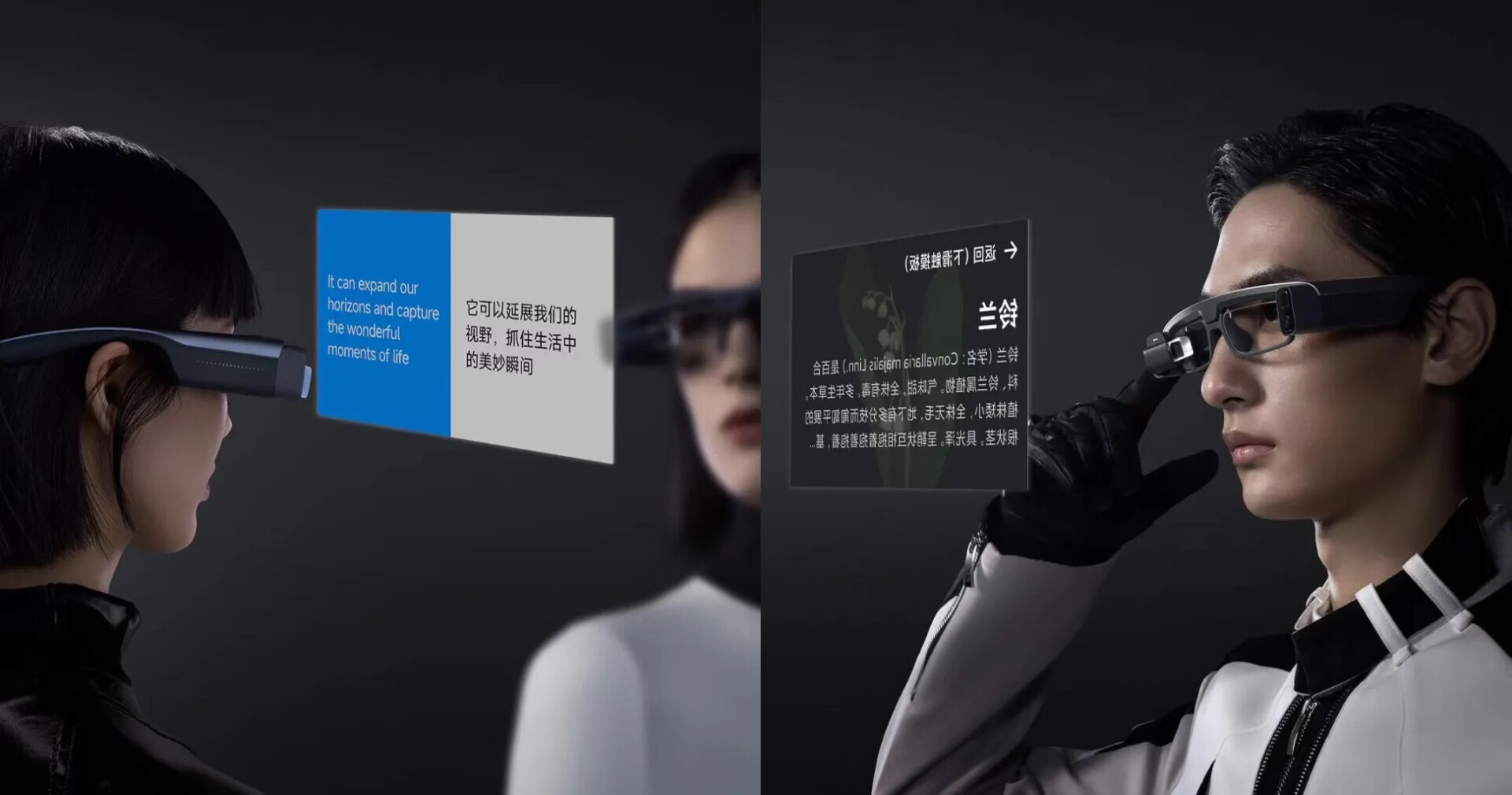Weighing 100g, the glasses run on a custom Snapdragon 8-based chipset from Qualcomm with 3GB of RAM and 32GB of storage. As for the display, Xiaomi collaborated with Sony to create a silicon-based OLED display in the form of a glass prism on the right side of the glasses, which differs from the original concept where the company said it would instead use MicroLED as it lasts longer. The display is claimed to have a peak brightness of 3000 nits, 1800 nits to the eye, a pixel density of 3281 PPI, and has German Rheinland hardware low blue light certification. The features available under the software include real-time translation between Chinese and English, AR effects, XiaoAI smart assistant, and screencasting, with more features to come in future updates. On the left side of the frame, the Mijia AR Glasses house a huge camera module that contains a 50MP main camera that uses Quad Bayer pixel binning, as well as an 8MP periscope telephoto lens with OIS. The telephoto sensor is capable of 5x optical zoom and 15x hybrid zoom, with the ability to record up to 100 minutes of non-stop footage. The Mijia AR Glasses are powered by a 1,020mAh battery, which apparently allows the wearable to only last 3.3 hours. It charges via wireless charging at a paltry speed of only 10W, but Xiaomi claims it can charge from 0 to 80% in just 30 minutes. To be clear, the Xiaomi Mijia AR Glasses are not hitting retail shelves just yet, as the tech giant is releasing the device through the crowdfunding method. The campaign will begin on Xiaomi Mall on 3 August, with a promo price of CNY2,499 (~RM1,647) and a retail price of CNY2,699 (~RM1,779) later on. (Sources: GMSArena, SparrowNews, Weibo)

